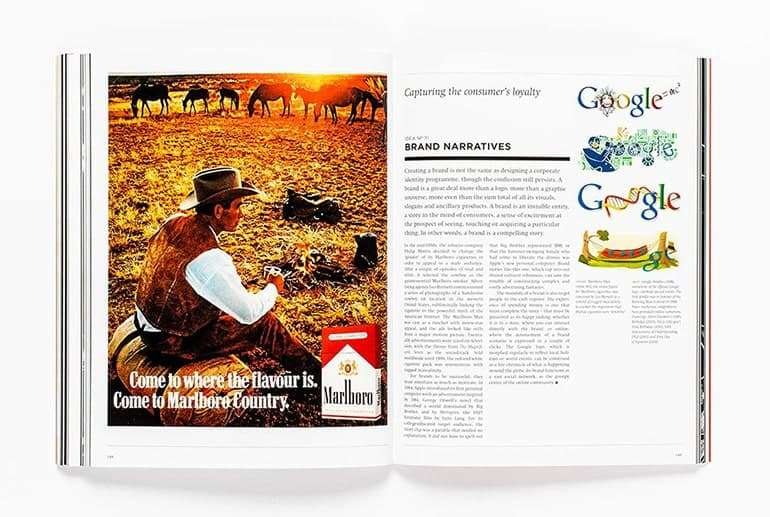A Chronicle of Transformative Graphic Design Concepts
A visually stunning and thought-provoking book, 100 Ideas That Changed Graphic Design by Steven Heller and Veronique Vienne illustrates how different ideas have influenced and shaped the graphic design industry. This book is a fascinating compilation of notable graphic design examples from the past century, as well as a source of inspiration. The ideas presented in the book range from the technical, such as overprinting and pixelation, to the decorative, such as swashes on caps and the use of white space, and even include things like dust jackets and design manuals. The book is organized roughly chronologically.
The information is presented in an entertaining and accessible manner, making it suitable for both beginners and seasoned industry experts. Each concept is richly illustrated to provide the reader with a clear visual understanding of the topic under discussion.

The Writers’ Experience and Knowledge
Steven Heller is a noted author and editor whose extensive body of work has made a significant contribution to the graphic design community. Heller has an unparalleled breadth of knowledge and experience in the fields of graphic design, satirical art, and popular culture, having written more than 130 volumes on these subjects. His commitment to advancing design education is evidenced by his dual role as co-founder and co-chair of the MFA Designer as Author program at the School of Visual Arts in New York.
Veronique Vienne, Heller’s co-author, adds her own unique perspective to the work, expanding and deepening the subject matter. Because of their combined knowledge, 100 Ideas That Changed Graphic Design is more than just a collection of ideas; it’s a careful examination of how these concepts have influenced the field of design.
Important Concepts and Topics
The book covers a wide range of topics and concepts, each of which has contributed to the development of graphic design in different ways. For example, technical features such as overprinting and rub-on graphics illustrate the evolution of design techniques, while stylistic components such as bold type and the deliberate use of white space show how artistic choices can make strong visual statements.
Dust jackets and design manuals are among the objects examined, demonstrating the important role certain things have played in the development of design. Techniques such as pixelation and paper cutouts are explored, providing insight into the thought processes behind some of the industry’s most avant-garde designs.

Conclusion and Significance
Anyone interested in the development and history of graphic design should read 100 Ideas That Changed Graphic Design. Every page of this book by Steven Heller and Veronique Vienne invites the reader to understand the significant impact these concepts have had on the visual world. It is a fascinating and enlightening read.
The book’s simple structure and vibrant images make it an engaging resource for designers, students, and anyone else interested in the creative process. Heller and Vienne have made a significant contribution to the design community by offering a wide range of examples and ideas. This resource will inspire and guide designers for years to come.
Where Can I Buy This Book?
“100 Ideas That Changed Graphic Design” by Steven Heller and Veronique Vienne is a 216-page paperback reissue published by Laurence King Publishing on January 22, 2019. This book has changed our understanding of how design shapes and influences the visual world. To get your copy and dive into these transformative ideas, here’s what you can do:
- Get your copy of “100 Ideas” from Amazon and explore the essential ideas that changed the field of graphic design forever.
- Get your copy of “100 Ideas” from AbeBooks and learn about the various ways these concepts have influenced design innovation.
We hope you enjoyed this review. Please note that this article contains affiliate links. By using these links for your purchases, you’re supporting our efforts to provide enriching content. We sincerely appreciate your support, and our recommendations are always unbiased and honest. Thank you for your support.





